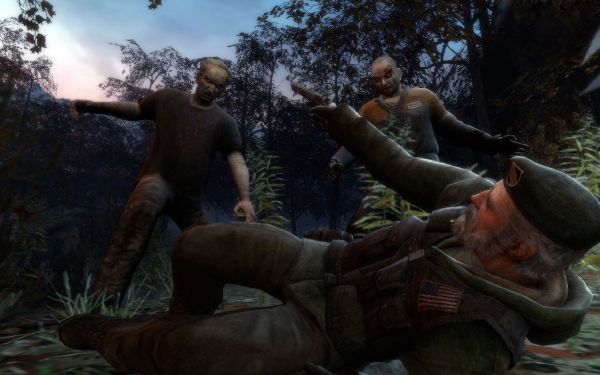When gamers look at a game, one of the things they may overlook is the basics of design - the game's mechanics. Though we notice the potential of how a great game is great, we may not know exactly why a great game works so well. A full analysis of the gameplay mechanics for Left 4 Dead by Full Sail grad student Paul Goodman and course director Adam Greenwood-Eriksen brings to the surface the key design elements. A comprehensive look from Left 4 Dead creators give a solid nod to Co-Op being key to the games success a bit closer to the surface.
Finding a balance in the game mechanic is something that developers really have to think about. Too complex and a player may be frustrated and unwilling to play, too simple and players become bored. One such method of balancing is by looking at three elements: SRK (Skills, Rules, Framework).
- Skill based behaviors are activities that are common and routine for an experienced individual and do not require much attention to execute; instead, the process is "triggered" and carried out in an automated fashion. An example of a skill based behavior common to console gamers is using the left and right thumbsticks to look around and move an avatar in game.
- Rules based behaviors hinge on following known mental steps and checklists built to guide the activity and require individuals to put more effort into carrying them out. Preparing to load a saved game on a console is be an example of a rules-based behavior, as it follows a checklist of steps to navigate through menus to find the appropriate saved game file and load it.
- Knowledge based behaviors present players with an activity with which they have little or no prior experience or understanding, and therefore must undertake some form of research (e.g. reading manuals or checking forums) or problem solving (e.g. trial and error experimentation) oriented approach to gain more information. A longtime gamer who's never played any form of major MMORPG, for example, would very likely engage in knowledge-based behavior in order to understand the functions of a typical interface from that particular game genre.
That's why the monsters in Left 4 Dead behave the way they do, and have us coming back for more time and time again. The other thing that makes Left 4 Dead shine? According to the team behind the magic, the key ingredient is co-op.
While experimenting with the AI for non-player bots the dev team found that the concept of "Small team of friends against hordes of clawing enemies" had a great deal of potential. Through more playtests and design discussion, the framework was laid down for Left 4 Dead core concept of a "Co-op vs. the horde game.
By blending these two key elements; a carefully laid framework and a survival situation with your friends, Left 4 Dead is able to use a variety of elements from game mechanics rules. Simple infected require a simple strategy to defeat, while the more complex enemies require a lot more teamwork. Having four people work together changes the boring to fast paced, and the challenging to a good fight. This is why Left 4 Dead works.
Source: Gamasutra.com
